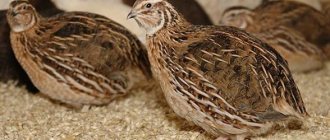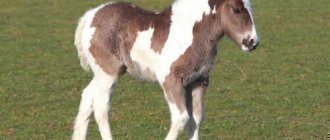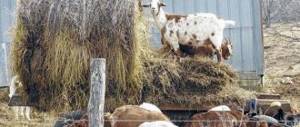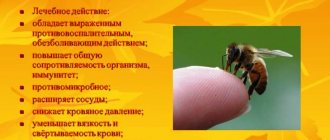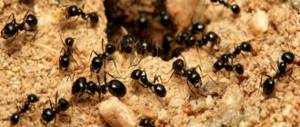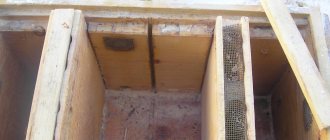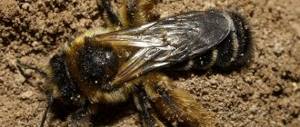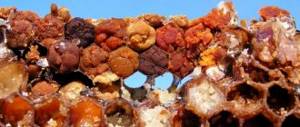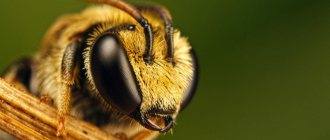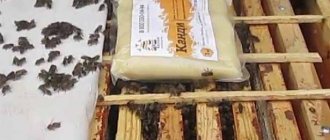Characteristics of the Carpathian bee breed
The peaceful and very hardworking bee is very popular among beekeepers. The Carpathian breed of bees has become widespread not only in Ukraine and Russia. It is bred in Belarus, Poland, Hungary and even China. In appearance and size, they are not much different from traditional breeds, but among the main advantages they have some special qualities.
Advantages of the Carpathian bee breed:
- Natural resistance to various characteristic diseases, for example nosematosis.
- Tolerates cold winters well and has a minimal mortality rate.
- High productivity.
- Production of large amounts of wax.
- Provides high-quality pollination for various types of crops.
- Rapid growth of offspring, start work early.
- Amazingly peaceful, they do not show signs of aggression when carrying out various work directly near the hives.
Breeding Carpathian bees does not require much effort; they are unusually resistant to many diseases, which guarantees strong families and a large “harvest” of honey. When working with them, you don’t have to observe any special safety measures, because bees do not show aggression towards people.
At the same time, among the disadvantages of this breed one can note a small production of propolis, as well as a reluctance to work in bad weather conditions. This will make it difficult to collect honey in some regions, but in general, the carpathian is significantly superior to many existing species of little workers and is readily bred by beekeepers in various regions.
The main “competitor” of the Carpathian bees are considered to be Austrian or carnika (the name comes from the small duchy of Krajina). The features and advantages of this breed are discussed below.
This is interesting The drug Aqua Flo for treating bees against mites
Description of the Austrian bee breed
The origin of this species, as stated earlier, began in Austria. Bees are a gray breed, with a small body and abundant fur. They have a rather long proboscis, which makes the process of obtaining nectar possible for a wide variety of types of honey plants. Carnica is no less widespread than Carpathian bees, but when breeding it has the following clear advantages.
Features and characteristics of karnika:
- less honey consumption in winter;
- quickly adapts after hibernation and starts collecting much earlier;
- leaves good reserves of honey, high productivity;
- not aggressive even in a stressful situation, for example, before a thunderstorm.
Breeding carnica is less burdensome; its amazing friendliness will allow you to inspect hives even without protective equipment. However, there are some disadvantages of this breed. First of all, this is a bad winter. Even taking into account the fact that most of the honey in reserve remains untouched, bees tolerate long winters less well and more often emerge weakened before spring flight.
The second significant drawback is the late appearance of brood. This will make it difficult to breed bees of this breed in regions where this factor is a determining criterion for the survival of bee colonies.
Overview of the Karnika breed
The ancestor of Karnika is considered to be Austrian bees. From ancient times to the present day, Karnika is divided into four strains or, so to speak, subspecies:
- karnika;
- Italian;
- Caucasian bee;
- dark forest.
They are highly productive bees and are considered to be very economical to this day, since they spend very little food in the winter. As a result, by spring time families emerge in the best condition.
Source
The Karnika bee was first mentioned at the end of the 19th century. The place of origin of the breed is Austria. Nowadays, the bee actively lives in Slovenia, Austria, the Russian Federation, Ukraine and Australia. Divorce began globally, Karnika began in the Russian Federation only in the 20th century. Its winter hardiness is as excellent as that of the Carpathian bee, therefore, in the northern regions it is started without problems.
Breed characteristics
Karniks are highly productive, honey bees. They overwinter in small families and develop explosively in the spring. Accordingly, the accelerated development of brood makes it possible to carry out early honey collection using flowering berry and fruit crops and winter rapeseed. At the same time, bees are ready to fully consume even later honey collections. They demonstrate excellent performance. Not only do they perform first-class on a sunny day, but they also make the most of the windows in rainy or foggy weather, always returning with a real treat.
Why do bees need a nucleus - to raise fertile queens?
They are enterprising in searching for sources of honey collection and freely switch from a bad option to an optimal one. Carnika is a fairly friendly insect. This trait is inherent in the leading mass of bees, although among various populations and intrabreed traits there are forms that are both very harmless and those with a predisposition to aggression. However, they mainly stand out for their calm behavior and show by their behavior a loyal attitude towards people.
Nest inspection
When examining the nest, the bees behave quite calmly, continuing to work serenely. This quality allows you to bypass bee colonies without smoke or protective mesh. In addition, they tolerate wintering well in long low temperatures. In this respect they are significantly superior to another very popular breed - the Caucasian, slightly inferior only to the Central Russian. Increased winter hardiness is interpreted by the adaptability of bees to the natural conditions of their historical homeland: cold winters, recurrent spring frosts and strong fluctuations in temperature levels during the day.
It is appropriate to say that the bees are characterized by vitality and, after leaving the winter hut, they form a small part of the dead. They tolerate transportation well. They have a high tendency to swarm. But at the same time, they quickly move from the swarm state to the working state when normal anti-swarm measures are implemented or in the presence of honey collection. Very resistant to invasive diseases.
Local coordination
They have good coordination and excellent knowledge of the terrain. This quality makes the breed excellently suited for pavilion cultivation. Among other things, they don’t fly into other people’s hives (they don’t steal), and they defend their own homes in a stunning manner.
Peculiarities of bees wintering outside in different regions
The current breed has a specific feature - relatively high agility . The fact is that 100 years ago such a parameter was considered significant, since it was the key to boosting industry. However, at the present time this is most likely a disadvantage rather than a positive point. Despite the fact that swarming can be kept under control without any random interference. Still, it’s worth being ready for this process in the second half of July, which can be accomplished by placing auxiliary frames for rebuilding in the nest.
A physiological feature of the carnika is its rather long proboscis , which is 6.6 millimeters, and sometimes reaches 6.8, which is only slightly inferior to alpine bees. This means that insects can obtain nectar and bee pollen even from inaccessible spaces. Almost the entire body of the insect is covered with a dense layer of light yellow color.
Appearance and dimensions
This factor is almost identical, because even in appearance the breeds are very similar to each other. The main difference is in the size of the queen bee, which in the Carpathian bee can reach up to 360 mg, while in the Carpathian bee it is only 200.
In addition, the Carpathian hive independently chooses its “head”; most often this is the most optimal option. If the beekeeper, for any reason, needs to replace the queen, he will have to get rid of the old one himself.
This is interesting The drug Apiton for the treatment of bees
Wintering and susceptibility to disease
An excellent choice that is resistant to harsh winters would be to purchase a Carpathian breed. They are less prone to characteristic ailments that often interfere with the normal breeding of bees. In addition, survival rate after winter is much higher, so this is one of the best options for a persistent and strong bee.
Karpatka is noticeably weaker in this regard, although it consumes less reserves, which is also considered an important selection criterion.
Video: Carpathian, Carnika, Ukrainian steppe and Buckfast bee families.
Characteristics and distinctive features
All breeds of honey bees have their own beneficial characteristics. Sometimes they are strengthened if the suppliers do not sell a pure breed line. This happens because most queens can mate with drones of any breed that they encounter during the nuptial flight, so the beekeeper often cannot guarantee the breed of the sperm obtained by the queen.
Did you know? It is believed that bees have lived on Earth for about 30 million years. Their remains were found in sediments of the Tertiary period. While the age of Homo sapiens
-
only a few tens of thousands of years.
An absolutely pure line is obtained by artificial insemination with a “queen bee”. And such bees are very expensive. When deciding on a purchase, you need to take this feature into account and only then begin to compare the presented breeds.
Origin
Carnica (Apis mellifera carnica, Pollmann) is native to Slovenia, southern Austria and parts of Croatia, Bosnia and Herzegovina, Serbia, Hungary, Romania and Bulgaria. It is a subspecies of the western honey bee. Karnika is adapted to the climate of Eastern Europe, the Austrian Alps and the Northern Balkans. It is extremely popular and ranks second in Europe after the Italian breed.
The exact origin of the Carpathian bees has not been established. Among the breeds that could be its founders are the Ukrainian steppe and Alpine bees. Natural habitat - Carpathians. The corresponding reserve includes 4 regions: Lviv, Chernivtsi, Ivano-Frankivsk, Transcarpathian. To preserve the breed line, the import of other breeds into the protected area is prohibited.
Familiarize yourself with the features of the Carpathian bee.
Appearance and features of oviposition
Carnica is dark brown in color with silvery pubescence. The dark chitin has lighter dots and stripes. The length of the working individual’s proboscis is 6.6 mm. The weight of the working individual is 100 mg, the barren uterus is 185 mg, the fertile uterus is 205 mg. Its egg production is 1400–2000 eggs per day. Carpathian is not too different in size. Its proboscis is up to 7 mm long. Weight of insects, respectively: 110 mg/185 mg/205 mg. Color: grey. In the 1960s, they tried to improve the Carpathian breed, so today there are several intra-breed varieties named after their distribution area: Synevir, Rakhovsky, Hoverla, Maikop. The Rakhov bees acquired a dull silvery tint, and the Maikop bees acquired a certain yellowness, which is not typical for Carpathian bees. The queen bee's egg production is 1200–1800 eggs per day.
Recommended regions for breeding
Both breeds can be grown in Russia, Ukraine, Belarus, and the Caucasus. They are quite hardy and adapted to the climate of these territories.
Did you know? People began extracting honey back in the Stone Age. And the first evidence that they began to breed bees dates back to Ancient Egypt. We can say that beekeeping as a type of activity is now about 6 thousand years old.
Description of the queen bee
The queen of the Carpathian breed can have several color options: from dark cherry to almost black. The average weight of a barren individual is 210 mg, and that of an oviparous individual is 218 mg. The queen bee carnika is characterized by the following dimensions: the weight of the barren bee is 180 mg, the weight of the oviparous bee is up to 250 mg. The color is dark brown with light stripes. According to beekeepers, she can begin laying eggs already at a temperature of +5°C, so the colony will have time to gain strength by the spring honey harvest. 1. Uterus of the Carpathian breed; 2. Karnika uterus.
How do bees behave?
Both breeds are peaceful. They are not aggressive when a beekeeper inspects the nest. The peculiarity of carpathians is that they can take a large amount of honey from forbs due to the length of their proboscis, so families are provided with honey even when the flowering of honey plants is low. Karnikas can be bred even in urban areas. They are excellent at navigating unfamiliar terrain, are quite peaceful and are not inclined to steal honey from others.
How do they cope with wintering?
Both breeds are equally resistant to cold winters and tolerate unfavorable climates well. They quickly increase the strength of the bee colony and are able to create large reserves of honey for wintering.
Important! Hives cannot be placed near highways or mobile phone towers. Noise interference can be a source of constant stress, which causes the death of bees.
Karnikas are prepared for wintering in advance. Feed is consumed sparingly. They do not require special conditions and can winter in a hive with a wall thickness of 4 cm. Insulation is required if the air temperature in the region during frosts drops below -20°C. The required amount of feed for the winter is about 25 kg.
Disease resistance
Carnicas are resistant to mites, honeydew toxicosis, acarapidosis and paralysis. In winter they can suffer from nosemotosis. The queen bee gets sick extremely rarely.
Productivity of breeds
The honey productivity of Carpathian bees is 30–40 kg of honey. The productivity of the carnik is 40–42 kg.
Advantages and disadvantages of breeds
Let's consider the positive and negative qualities of representatives of both breeds:
| Carpathian breed | Karnika | |
| Advantages |
|
|
| Flaws |
|
|
Features of breeding and maintenance
In the spring, beekeepers remove the hives from the winter hut. The air temperature at this time should not be lower than +12°C during the day. If the family is strong and has enough food, then there is no need to rush too much with the transfer. If the insects are restless, or there are spots of diarrhea in the hive, it is worth taking them out earlier. The space for the hive is cleared of snow, drinking bowls are prepared, and in the morning on a quiet sunny day the hives are installed in the prepared places. The flight paths are not opened immediately. It is also necessary to inspect the results of wintering, clean the bottom of dead bodies, and check for the presence of a queen and frames with brood. If the queen dies, then a new one must be implanted. If there is less than 10 kg of honey in the hive, then a frame with honey is added to it for feeding. It is preheated. If there are no spare frames, place a feeder with syrup.
Design features of different types of lungwort honey extractors
Important! The hives should not be checked on a sunny day. At this time, bees are especially active and can show maximum aggression.
They keep bees in hives. It is believed that multihulls are better for breeding and easier to maintain. If bees need to be relocated, this work is also carried out in the spring. In addition, beekeepers check the frames and, if necessary, add empty foundations for rebuilding with unoccupied young bees. The beekeeper also monitors the condition of the bee colony and makes adjustments if there are signs of swarming or other behavioral patterns.
Strains of bee breeds, subspecies and their characteristics
A strain is a rather vague combination of genetic traits that characterize a particular group of honey bees. The characteristics of the breed include behavioral characteristics, habitat, breeding line of the breed, and even breeding characteristics. The classification cannot be called accurate due to many exceptions to the rules. But experts have their own markers, which help them classify a specific type of bee.
Productive and non-aggressive
According to these two indicators, both breeds deserve the highest rating. Karnika and Karpatka are distinguished by their peaceful disposition and are calm about the appearance of people near their hives. This makes working with them safe and also prevents the risk of being accidentally injured by a pet. Honey production in both breeds is also quite high, so this is an excellent option for hardworking and calm bees.
What breed of bees should you choose? This question is often relevant even for experienced beekeepers. Different breeds are adapted to living conditions in different ways, so the best solution would be to analyze all vital signs.
This is interesting Bee breed Karpatka
It also doesn’t hurt to study the breeds in reality: try the content of both “competitors”, choosing the best option for yourself. Karpatka and Karnika are considered one of the most productive and hardy bees, while being completely non-aggressive and capable of bringing only positive impressions from apiary breeding in our regions.
Bees Karpatka and Karnika can be angry
Text of the video “When the Karpatka and Karnika bees are angry.”
Hello.
I am with you, Dmitry Ovsyannikov. It's autumn, October 21st. Bees do not fly, but, strictly speaking, for our conversation today, there is no need to show bees. That is, flying is not needed. Today we will talk about when Karpatka and when Karnika are evil.
I started working with bees after the army. In 1989, he came out of the army, took a beekeeping course, and in 1990 he started bees. They brought them to me from the Carpathians. My first bees were Karpatka, and I was engaged in bees for probably more than ten years, until the beginning of the two thousandth.
So, Karnika and Karpatka are considered quite good breeds of bees, for example, in comparison with Central Russian ones, which are still evil. But, nevertheless, Karpatka also has periods when the bee family is angry.
In Karpatka, the aggression of the bee colony is usually associated with the queen. (We don’t take such cases when the weather is cloudy, windy, when the bees have been sitting in the hive for a long time, and then the beekeeper comes to them: in this case any, even the kindest bees will turn out to be aggressive). And so, when in normal weather a beekeeper climbs, and suddenly the whole family pounces on him - in Karpatka this, as a rule, is always associated with the queen (with its absence, or with the fact that for one reason or another the queen does not worm, for example, when the uterus in the family is not fertile). And so, then Karpatka can be evil. That is, if we climb into the hive and see that Karpatka is evil, which means we are looking for a problem in the uterus: something is wrong with the uterus. Karnika...
As I already said, I was involved in bees until the early 2000s, then there was a fairly long break. Why? Because in the early nineties there were still quite large meadows near my house, and then all these meadows were filled with dachas. In the forest, clearings where flowers also grew that gave nectar were polluted and used as garbage dumps. That is, at the beginning of the 2000s there was no possibility of keeping bees in the Moscow region (in the area where I had an apiary). There used to be a large field in front of the house. There was a TV tower on this field, and we were always told that nothing could be built five hundred meters from this TV tower, due to sanitary standards, because high-frequency radiation was coming from the tower, and it was unsafe to live here. But times change, and what was impossible under Soviet rule became possible under our new capitalism and, accordingly, this entire field was built up right up to the TV tower itself. Well, along with the field, the honey base from which the bees could at least collect something disappeared. Well, I didn’t really want to have invert sugar instead of honey. Therefore, I gave up beekeeping.
In 2021, I bought a plot of land in the Tula region, and as they say: “It’s easier to quit drinking, smoking and taking drugs than to quit bees.” And the first thing I did in 2021 was keep bees.
Previously, I had Karpatkas, they were brought to me from the Carpathians, but now, due to the situation in Ukraine, I decided that it is unlikely that they would bring me the right bees from the Carpathians, and I don’t know who to take a cross between Karpatka from somewhere in the Krasnodar region - probably , not quite right. Therefore, I decided to get a Karnika, and immediately noticed a difference in bee colonies: in the way bee colonies develop, and in when Karnika is aggressive. Again, we don’t take cloudy weather, windy weather, when the beekeeper foolishly climbs into the hive in cloudy weather, and the bees pounce on him (well, like “pounce”: 1 - 2 can be “nipped”: compared to Central Russian ones - nothing , but, nevertheless, not pleasant). So, Karnika, as I noticed, can be aggressive, and this is always associated with... no, not with the absence of a queen (by the way, this year I had several families both without queens and with infertile skeins). So, according to Karnika, it is not noticeable that there are any problems in the family. That is, if in Karpatka the absence of a uterus is the main reason for aggression, then in Karnika it is difficult to understand whether they have a uterus or not, whether it is wormy or not. That is, you must definitely go through the hive to see if there is seeding in the family. This is not noticeable from the appearance or aggressiveness of the bees.
But, nevertheless, Karnika can be evil, and this happened to me.
On May 20, I climbed into the family, and so, by appearance, I determine: on one frame there is a strip of honey, on the other, the third frame is two-thirds filled with honey. So I calculated - I have about ten kilograms. Well, I think: okay. Flowers are blooming, the weather is good. And so, on June 1, suddenly my bees become angry, and I cannot understand what is causing this. I thought: maybe the queen mated with the Central Russian drone, maybe because of this? Well, somewhere on June 10, I looked into the family and understood everything... In short, the entire Rutov corps (at that time I had 12 frame hives, although they were Rutov, but not standard: homemade), the entire Rutov corps was chock full of brood: 11 frames of printed brood and only one is open brood. The stern is a small, small strip. That's it: there is no more food. That is, what happened: if Karpatka never allows the family to run out of food, if Karpatka always limits egg laying, if there is not enough food, if food does not come in sufficient quantities, then Krnika grows black from internal reserves: she had 10 kilograms food - she used up all this food. The result is full of brood, but no food. Well, it’s clear that bees want to eat, but they don’t have to eat: the beeless period. Flowers are blooming... Well, how are they “blooming”: last year I saw that there was no obligatory period in the Tula region, but here, somehow, it turned out that the spring honey plants had already faded, but the summer ones had not yet begun. This happened exactly during the period from May 20 to June 10, and it was at this time that my bees became angry.
How to fix the situation? Feed: two or three glasses of syrup over two or three days, and my bees became healthier again.
The second situation, when Karnika is angry, is also associated with food, but not with a lack of food, but with its excess. Hive 4 buildings. 4 buildings are filled with honey. The end of the main bribe. Bees - at least don’t walk past the hives.
And after some time I understood the reason: 4 buildings is a lot, and such wealth is quite attractive both for bees from other families and for wasps. And, therefore, the bees of this family have to defend themselves every day, every day to defend themselves from annoying predators. Guarding four buildings is quite difficult. Therefore, what I did: I pumped honey out of two buildings, and placed bees on two buildings. The bees instantly became kinder. That is, the number of buildings has been reduced to a level that is easy for the bees to defend and that’s it: the bees have become kind.
I currently have three Karnika lines in my apiary. These are: Troizek, Varroatolerantz and Peszec. What I noticed: that Troyzek has a situation where bees are aggressive due to lack of food. That is, Troyzek is worming at the expense of internal reserves. The pawn does not allow the family to run out of food: perhaps the queen slightly reduces egg laying, but just a little, so that some reserve in the family is constantly preserved. Therefore, due to the lack of food, neither Varroatolerantz nor Peshets became angry, but, however, the brood was slightly less than that of Troyzek. Well, after the main bribe, there are both those who are aggressive, and others, because the honey needs to be defended. There is a lot of honey here too, in order for the bees to grow healthier, the main thing is to pump out the honey in time, reducing the number of cases to a level that is comfortable for the bees: when the bees have enough for the winter and are easy to drop.
Thank you for your attention. I was with you, Dmitry Ovsyannikov and Tsvetochek.ru. If you liked the video, give it a “thumbs up” and subscribe to our video channel.
Goodbye.
